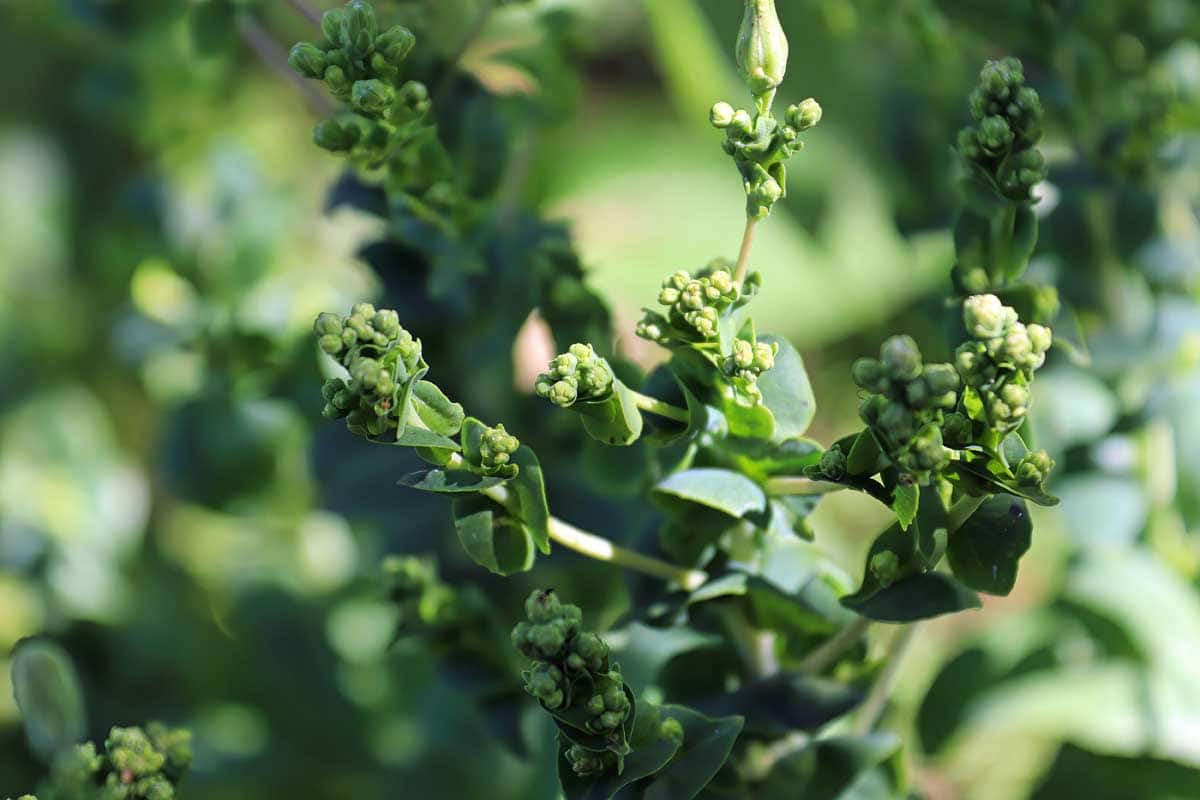So, you’ve noticed something a bit unusual happening with your spinach plants – they’re flowering! Before you start worrying that your green leafy vegetables have taken on a new identity as flowers, let’s take a moment to understand the reasons behind this interesting phenomenon. While it may seem strange, spinach plants actually have a biological drive to flower, and there are a few key factors that can trigger this behavior. Whether it’s due to age, environmental conditions, or even stress, let’s explore the fascinating world of flowering spinach and gain a deeper understanding of why it’s happening in your garden.
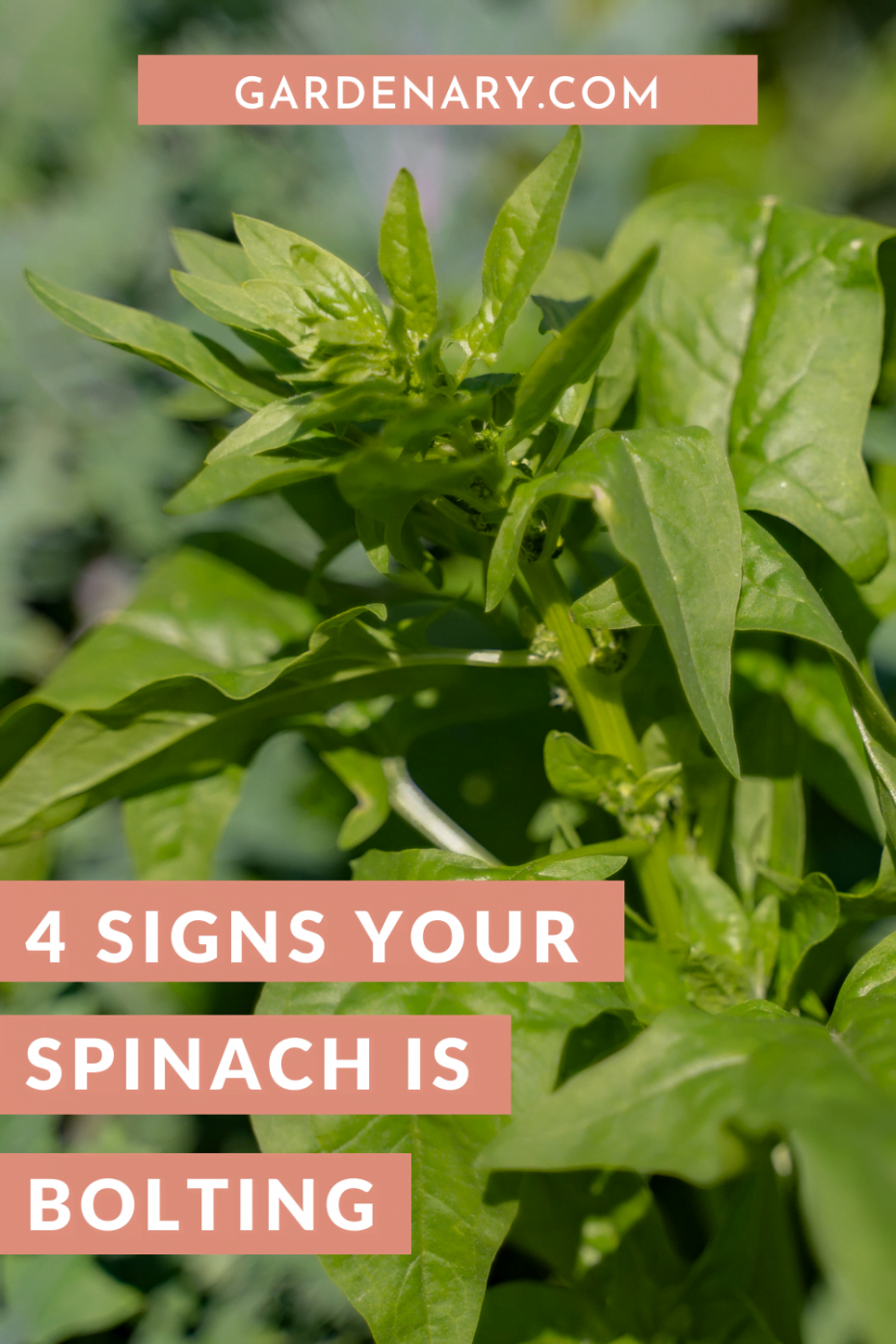
What is Flowering Spinach
Flowering spinach, also known as bolting spinach, refers to spinach plants that have entered the reproductive stage of their life cycle. Instead of focusing on leaf production, flowering spinach begins to produce flowers and eventually seeds. This phenomenon is a natural occurrence in the life cycle of many plants, including spinach.
Definition of Flowering Spinach
Flowering spinach is a term used to describe spinach plants that have transitioned from the vegetative growth phase to the reproductive phase. This transition is characterized by the development of flower stalks, which emerge from the center of the plant and produce flowers. The presence of flowers signifies that the plant is shifting its energy towards reproduction rather than leaf growth.
Characteristics of Flowering Spinach
Flowering spinach plants display certain characteristics that set them apart from non-flowering spinach. One noticeable characteristic is the elongation of the stems, as the plant directs its resources towards the formation of flower stalks. Additionally, the leaves of flowering spinach may become bitter or develop a tougher texture compared to non-flowering spinach. The overall growth of the plant may also slow down or become stunted.
Examples of Flowering Spinach Varieties
There are several flowering spinach varieties available that are specifically bred to be more resistant to bolting, allowing for prolonged leaf production. Some popular examples of flowering spinach varieties include Bloomsdale Long Standing, Tyee, and Corvair. These varieties have been selected for their ability to resist premature flowering and maintain a high-quality leaf yield.
Signs and Causes of Flowering Spinach
Understanding the signs and causes of flowering spinach is crucial in effectively managing and preventing premature bolting.
Visible Signs of Flowering Spinach
One of the most apparent signs of flowering spinach is the emergence of flower stalks from the center of the plant. These stalks will eventually produce small, inconspicuous flowers. The elongation of the stems and the formation of flower buds are also indicators of the plant’s transition from vegetative growth to reproductive growth.
Environmental Factors Affecting Flowering
Several environmental factors play a significant role in triggering and influencing the flowering process in spinach. The length of daylight, temperature, and humidity/moisture levels all contribute to the likelihood of spinach flowering prematurely.
Genetic Factors Affecting Flowering
Genetic factors also influence the propensity of spinach to bolt. Some spinach varieties are naturally more prone to flowering, while others are bred to resist bolting. Additionally, mutations in specific genes can affect the flowering behavior of spinach plants. Understanding the interplay between genetic factors and environmental conditions can help in effectively managing and preventing premature flowering.
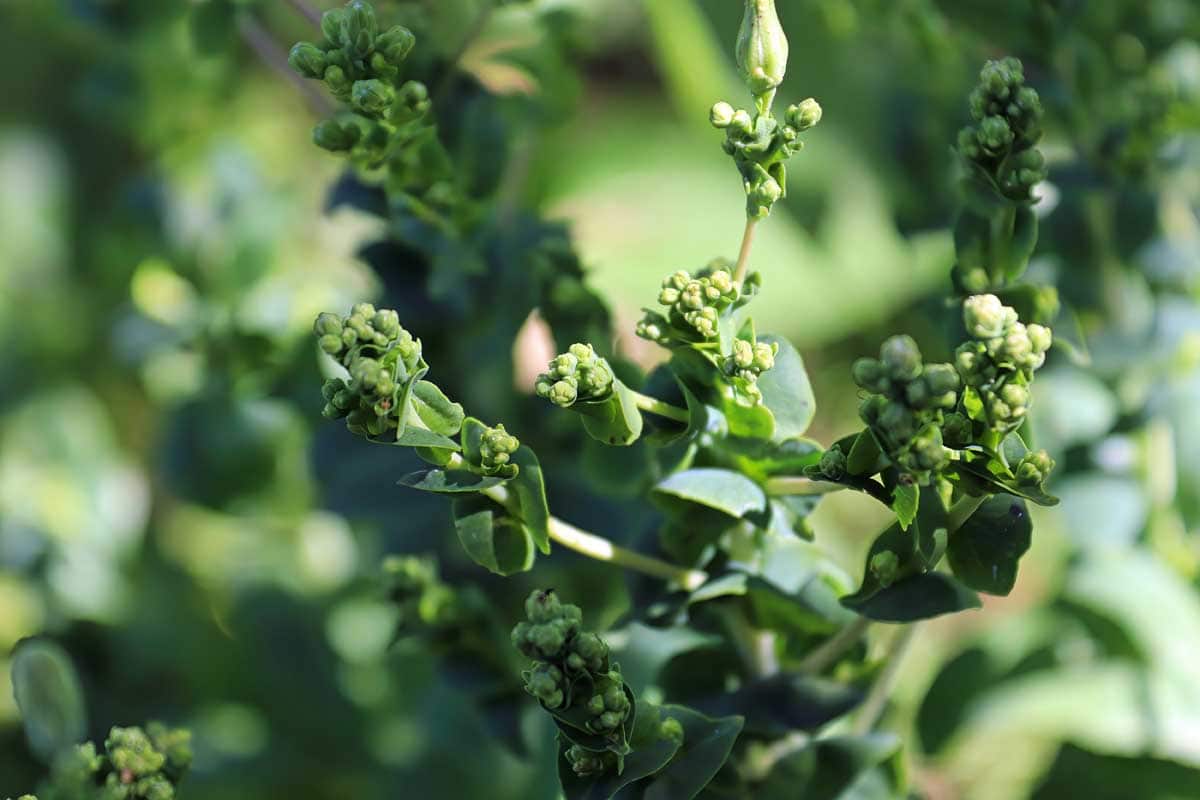
Environmental Factors
Environmental factors play a crucial role in the flowering process of spinach.
Length of Daylight
Spinach is known as a cool-season crop, and its growth is influenced by the duration of daylight. Extended periods of daylight, especially as the days lengthen in the spring or summer, can signal to spinach plants that it is time to transition to the reproductive phase. Conversely, shorter daylight hours in the fall and winter can help delay flowering and prolong leaf production.
Temperature
Temperature also plays a vital role in spinach flowering. High temperatures, particularly if consistently above 75°F (24°C), can trigger flowering in spinach plants. Conversely, cooler temperatures, ideally between 50°F (10°C) and 70°F (21°C), are more conducive to leaf growth and can help delay bolting.
Humidity and Moisture
Humidity and moisture levels in the environment can affect the flowering behavior of spinach. Excessively dry soil or low humidity can stress the plants, potentially inducing them to bolt. Adequate soil moisture and moderate humidity levels are ideal for promoting leaf growth and discouraging premature flowering.
Genetic Factors
The genetic makeup of spinach plants has a significant influence on their tendency to bolt.
Varieties Prone to Flowering
Certain spinach varieties have a natural inclination to bolt earlier than others. This can be due to specific genetic traits that make them more sensitive to environmental cues or simply part of the plant’s inherent growth pattern. By selecting spinach varieties known for their resistance to bolting, gardeners can minimize the risk of premature flowering.
Gene Mutations and Inheritance
Mutations in certain genes can also contribute to the flowering behavior of spinach. Inherited genetic factors can affect the way a plant responds to external stimuli, including temperature and day length. Researchers are continually studying the genetic basis of bolting in spinach to gain a better understanding of these complex interactions.
Prolonged Vegetative Growth
Spinach plants that exhibit prolonged vegetative growth are less likely to bolt prematurely. This characteristic can be influenced by a combination of genetic factors and proper environmental conditions. By selecting varieties that have been bred for extended vegetative growth, gardeners can enjoy a more prolonged period of leaf harvest before flowering occurs.
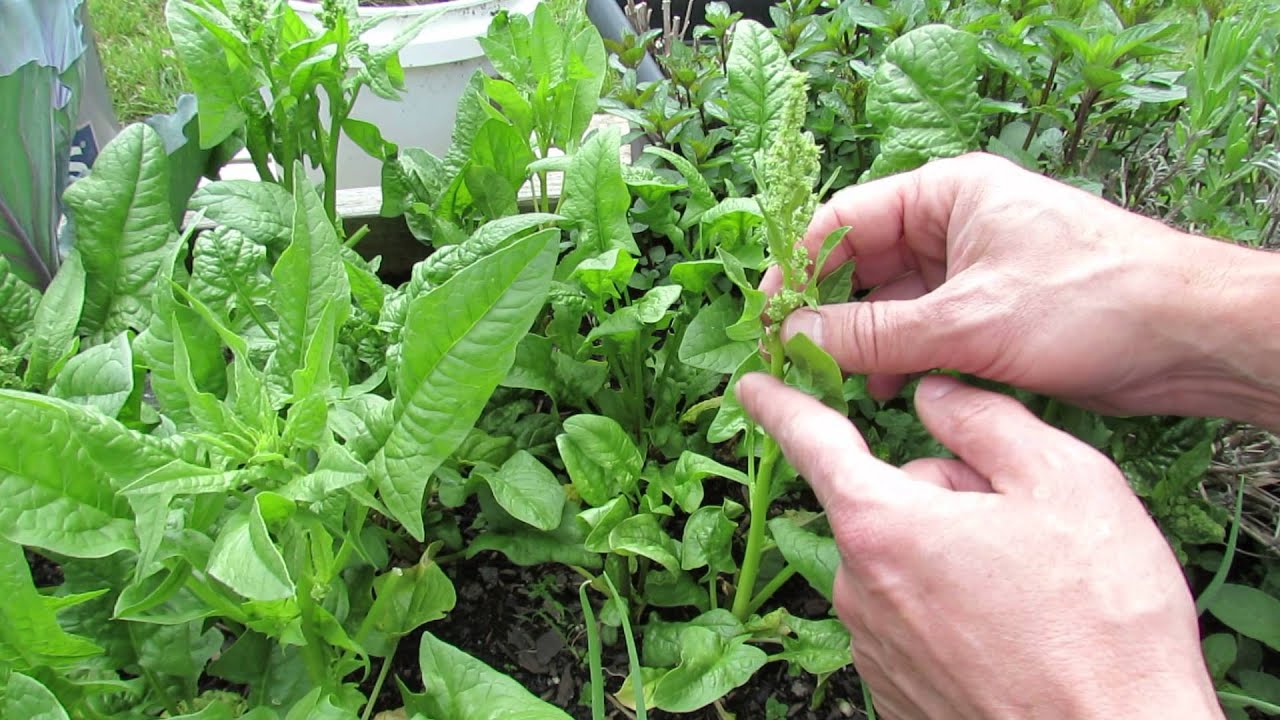
Effects of Flowering on Spinach
Understanding the effects of flowering on spinach plants can help gardeners assess the impact of bolting on leaf quality and overall plant development.
Bolting and Flowering Process
The bolting and flowering process redirects the plant’s energy towards reproductive efforts. As the spinach plant produces flower stalks and flowers, the development of leaves may slow down or become stunted. All the energy and resources that were previously allocated for leaf growth are redirected towards seed production.
Changes in Plant Growth and Development
The transition from vegetative growth to reproductive growth can lead to noticeable changes in the appearance of the plant. The stems of flowering spinach may elongate, causing the overall plant height to increase. The leaves may become more bitter or develop a tougher texture as they mature and prepare for seed production. The growth rate of the plant may also slow down compared to non-flowering spinach.
Impact on Leaf Quality and Flavor
One of the main concerns for gardeners when spinach starts to flower is the potential decline in leaf quality and flavor. As the plant channels its energy towards seed production, the leaves may become less tender and more bitter in taste. This change in flavor can impact the culinary uses and enjoyment of the harvested spinach leaves.
Strategies to Prevent Flowering
Taking proactive measures to prevent premature flowering in spinach can help extend the period of leaf harvest and improve overall plant performance.
Choosing Flowering-Resistant Varieties
Selecting spinach varieties that are specifically bred for their resistance to bolting is a crucial step in preventing premature flowering. These varieties have been developed to withstand environmental triggers and have a higher chance of maintaining leaf production for an extended period.
Proper Planting Timing
Timing is essential when it comes to planting spinach. Sowing seeds or transplanting young seedlings at the appropriate time can help avoid exposure to high temperatures and long daylight hours, which can induce flower formation. Planting spinach during cooler periods, such as early spring or late summer, can increase the chances of prolonged leaf production.
Controlling Environmental Conditions
Creating and maintaining optimal environmental conditions can discourage spinach from entering the reproductive phase prematurely. Providing adequate shading or using row covers can help reduce exposure to intense sunlight, thus preventing excessive heat buildup. Additionally, mulching the soil can assist in maintaining consistent moisture levels, which can help prevent stress-induced bolting.
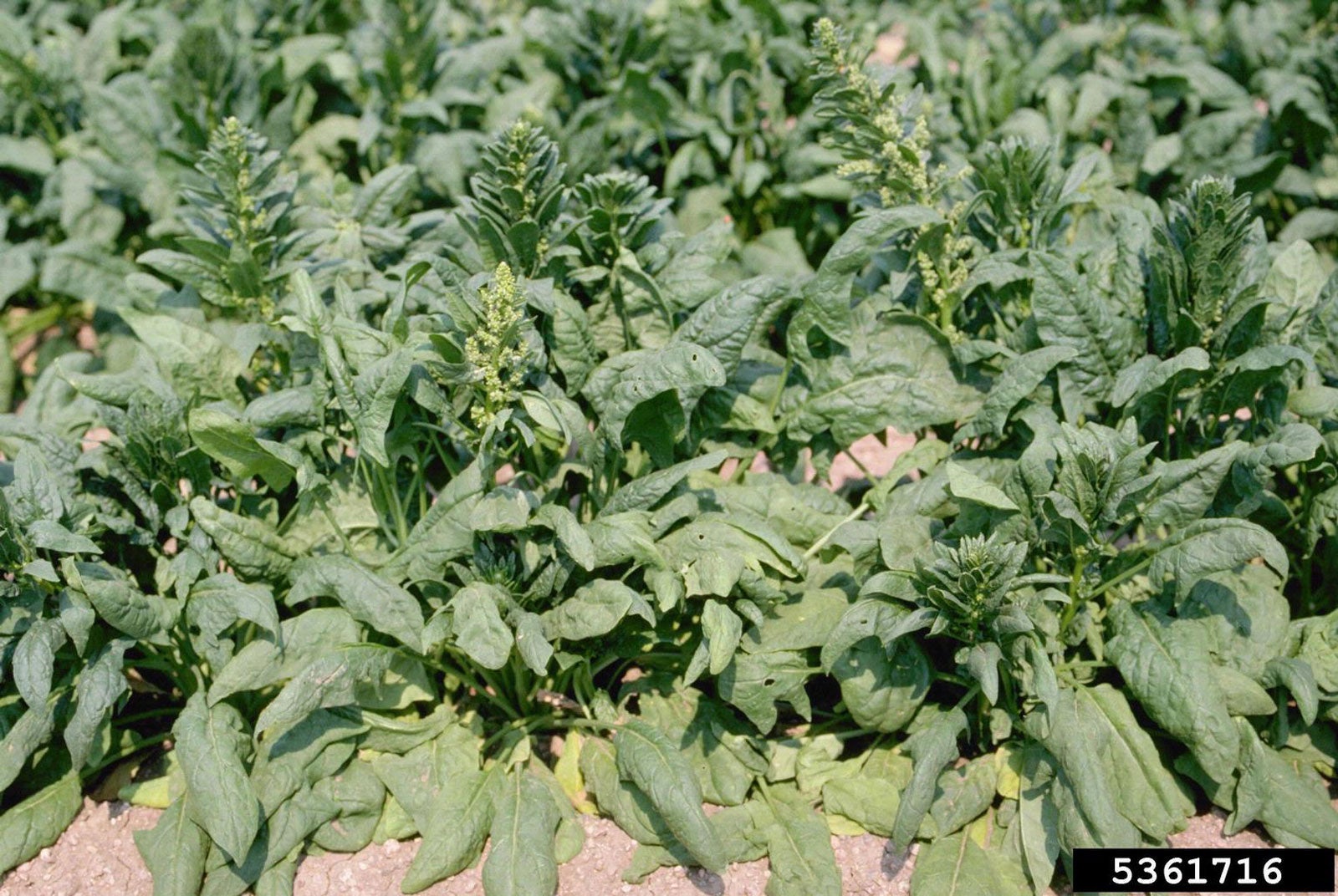
Harvesting and Using Flowering Spinach
Although the primary goal is to prevent premature flowering, there are still ways to utilize and enjoy flowering spinach.
Harvesting for Seeds
When spinach plants begin to flower, gardeners can choose to collect the seeds for future planting. Allowing the flowers to mature and produce seeds can provide a sustainable source of spinach seeds for subsequent growing seasons. It is essential to allow the seeds to fully dry and mature before collecting and storing them properly.
Utilizing Flowering Spinach in Cooking
While the leaves of flowering spinach may be tougher and slightly bitter in taste, they can still be used in cooking. The leaves can be blanched or cooked for a longer duration to help soften their texture and mellow out the bitterness. Flowering spinach can be incorporated into various dishes, such as soups, stews, and stir-fries, where the flavors can be balanced with other ingredients.
Other Creative Uses for Flowering Spinach
Beyond culinary applications, flowering spinach can also be utilized in other creative ways. The flowers and flower stalks can be used as ornamental elements in floral arrangements or as garnishes for salads and other dishes. Additionally, the dried flower stalks can be repurposed for crafts or home décor projects, adding a touch of natural beauty to the environment.
Plant Care and Maintenance
Implementing proper plant care and maintenance practices can help support the overall health and vitality of flowering spinach plants.
Pruning and Removing Flower Stalks
To redirect the plant’s energy towards leaf production, it is recommended to remove or prune the flower stalks as soon as they appear. By removing the flowers, the plant can focus its resources on generating new leaves rather than seed production. Regularly monitoring the plants for the emergence of flower stalks and promptly pruning them can help promote prolonged leaf harvest.
Fertilization and Nutrient Management
Providing the appropriate nutrients to flowering spinach plants is essential for their growth and resilience. Incorporating well-balanced organic fertilizers or compost into the soil before planting can provide the necessary nutrients for healthy leaf development. Additionally, regularly monitoring nutrient levels through soil testing and making adjustments as needed can help optimize plant growth and minimize stress-induced bolting.
Watering and Irrigation Techniques
Consistent and adequate watering is vital for the overall health and growth of flowering spinach plants. Mulching the soil can help retain moisture and reduce water evaporation. Regularly monitoring the soil moisture levels and providing sufficient irrigation when needed can help prevent drought stress, which can trigger premature flowering.
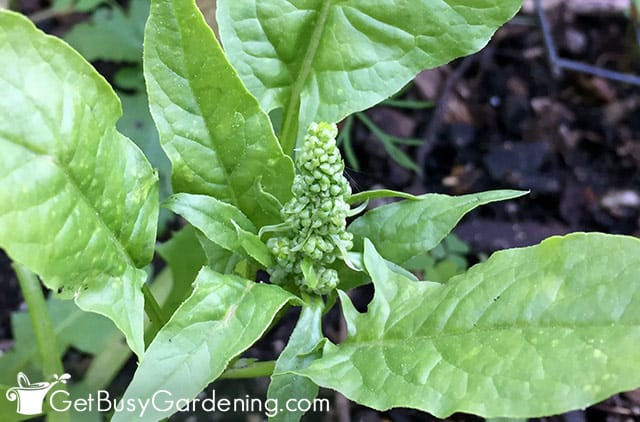
Benefits of Flowering Spinach
Despite the challenges associated with flowering spinach, there are some benefits to consider.
Seed Saving and Propagation
Allowing spinach plants to flower and produce seeds provides an opportunity for seed saving and propagation. Harvesting mature seeds can contribute to a sustainable gardening practice, as the seeds can be used for future planting. By consistently selecting and saving seeds from plants that exhibit desirable characteristics, gardeners can develop their own locally adapted strains of flowering spinach.
Attracting Pollinators
The flowers produced by flowering spinach can attract beneficial pollinators such as bees and butterflies. These pollinators play a crucial role in the reproduction of many plant species, aiding in the transfer of pollen between flowers. While attracting pollinators may not be the primary intention in growing spinach for its leaves, it can contribute to the overall biodiversity and ecological balance in the garden.
Culinary Diversity
Flowering spinach, although slightly different in texture and flavor compared to non-flowering spinach, can offer an opportunity to diversify culinary experiences. The unique taste and texture of flowering spinach leaves can be explored and incorporated into various dishes, adding a distinct flavor profile to meals. Embracing the changes brought about by flowering spinach can open up new possibilities in the kitchen.
Conclusion
Understanding the reasons behind and strategies to manage flowering spinach is crucial for successful spinach cultivation. By recognizing the environmental and genetic factors that contribute to bolting, gardeners can make informed decisions in selecting varieties, implementing proper planting practices, and creating optimal growing conditions. While the transition to the reproductive phase may impact leaf quality and flavor, it also presents opportunities for seed saving, attracting pollinators, and culinary experimentation. With proper care and management, flowering spinach can be appreciated both for its ornamental value and its contribution to culinary diversity.
